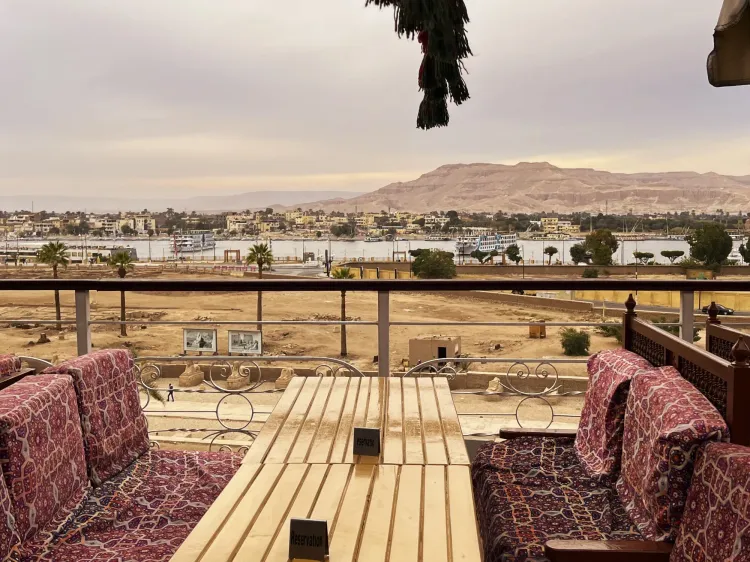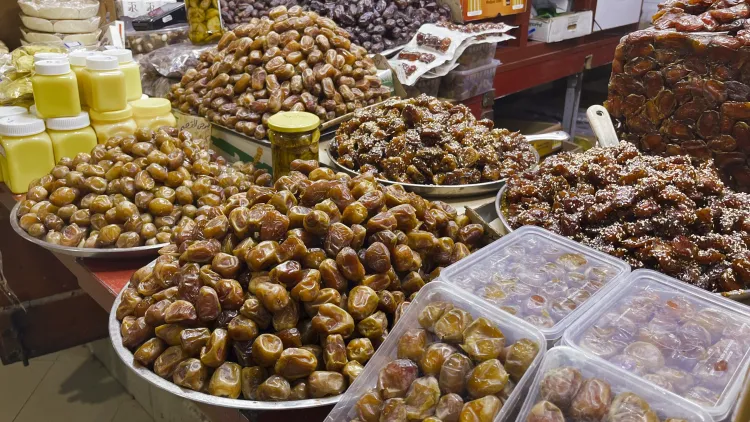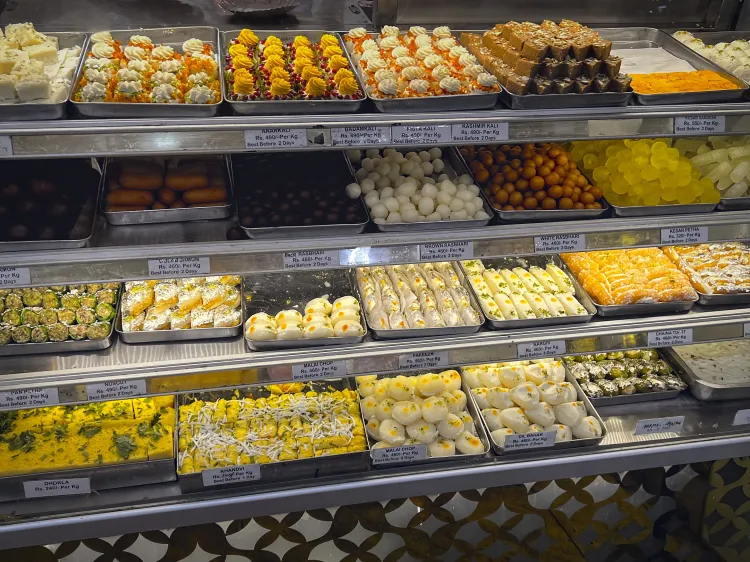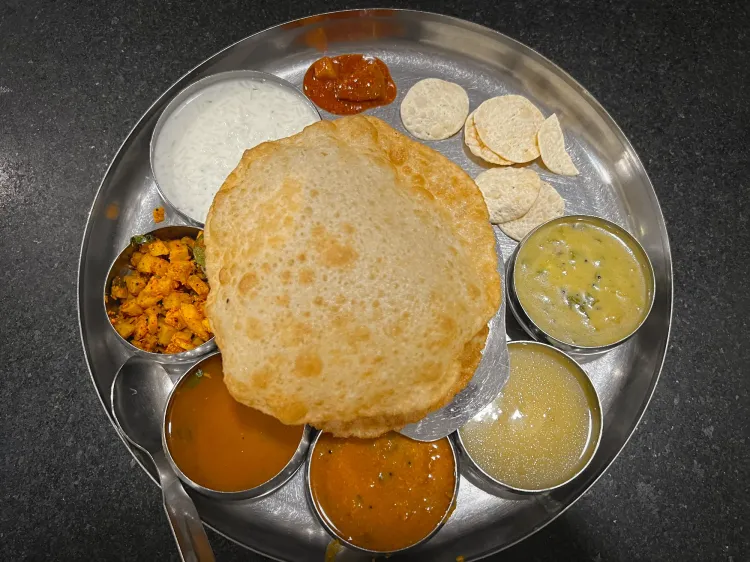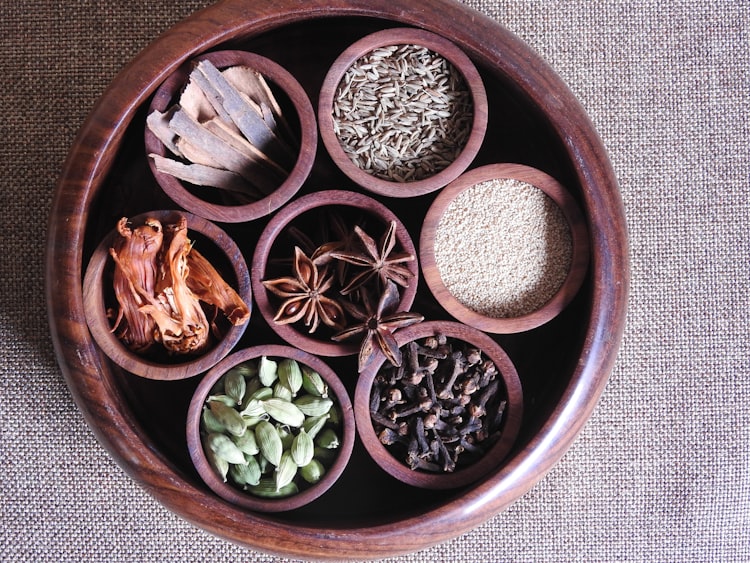Italian Gastronomy (Pt. 1 - Southern Italy)

Italian food is consistently rated as the world's favorite cuisine. Pizza and pasta, Italy's two most famous international hits, also score as the world's favorite dishes. Who does these surveys and whether these facts translate into anything meaningful is unclear. What is clear is that Italian food is one of the most beloved and popular cuisines on this planet, and an understanding of Italian gastronomy should be on the top of every food lover's syllabus.
True Italian dishes are, for the most part, simple recipes that are made from high-quality, fresh ingredients that are in season. Food in Italy is intimately intertwined with the culture itself. Every country in the world has a certain ranking of priorities, and aspects of the culture reflect these priorities. Italy, like France, is one of the few countries that has an incredibly strong priority on food. Almost all cultures take deep pride in their own cuisine, but some people groups have developed an infatuation with the ingredients themselves. Where was the produce grown? What kind of breed, and from what region did this meat come? What processing and supply chain did this food have to go through to get to my plate? Is it the right season for these ingredients in order to serve this dish? These are the questions a chef asks, but are not the typical concerns the modern eater burdens themselves with when thinking about a simple meal from their own culture. Italy is one of the unique cultures that will prioritize food to such an extreme that these questions are subconsciously baked into the culture. This is one of the reasons that Italian food in Italy tastes so incredible. It is the prioritization of quality, fresh ingredients, as well as the genius that is pizza/pasta, that elevates Italian cuisine to the highest level of gastronomy.
History
The country we know as Italy unified as a single nation in 1861. Before that time Italy consisted of a number of smaller kingdoms. The reason Italy is usually discussed as Northern Italy vs. Southern Italy is that the southern kingdoms had a relatively different political history than the northern kingdoms. Southern Italy historically had been under the control of Arabs, Greeks, Spanish, and Normans; on the other hand, Northern Italy has a past of French, Celts, and Germanic influences. Additionally, much of Southern Italy more closely resembles the typical Mediterranean culture in both its climate and access to the sea. The combination of geography and this unique blend of cultures has amalgamated into the wonderful cuisine we see today!
The regions that define Southern Italy are Abruzzo, Apulia (also called "Puglia"), Basilicata, Calabria, Campania, Molise, Sardinia, and Sicily. Abruzzo is a mountainous region characterized by an abundance of meat. Apulia (dubbed "Puglia" by the Normans when they conquered the area) prides itself on its olive trees, while often featuring eggplants and a heavy dose of seafood in its dishes. Basilicata contains Matera and Altamura, producing some of the world's most unique bread. Calabria is another semi-mountainous region that incorporates spice into its regional dishes. Campania contains Naples and many famous staples such as pizza, and Caprese salad. Molise is a small, extremely mountainous region that created both the fusilli and cavatelli kinds of pasta. Sardinia is another incredibly mountainous region with a variety of meat-focused dishes, especially around their use of wild boar. Sicily is the largest island in the Mediterranean, with an incredibly rich history as well as famous dishes like arancini, granitas, and cannoli.
Regions
Abruzzo
Apulia (Puglia)
Basilicata
Calabria
Campania
Molise
Sardinia
Sicily
The ingredients ingrained into the Italian countryside are frequently featured in the entire country's cuisine: tomatoes, olive oil, oregano, and basil. Pasta and cheeses are of course a part of every Italian cook's pantry (or at least the eggs and Semolina / 00 flour), but each region emphasizes different types of pasta or cheese. Traditionally, Southern Italy is known for its sheep’s milk Pecorino, ricotta, and the ever-famous Mozzarella di Bufali. Pasta is an interesting comparison. You may have heard conflicting advice on whether to use Semolina (a durum wheat flour), 00, or even All-Purpose flour for making your homemade pasta. This is because in Northern Italy the population has historically used 00 flour or a 00/All-Purpose flour mix to make their pasta, while in Southern Italy pasta was made with Semolina flour. The pasta styles originating from Southern Italy (paccheri, orecchiette, cavatelli) were thus classically made with Semolina flour, but nowadays only the strictest Italian traditionalists will insist on matching these pasta types to the correct flour. Finally, Southern Italy benefits from a warm Mediterranean climate which facilitates scrumptious seafood dishes, a common inclusion of eggplant (aubergine), and the country's best citruses.
Major Ingredients
Tomato
Olive Oil
Oregano / Basil
Citruses
Pasta
Cheese
Italian Meal Structure
Traditional
The Italian meal structure has been cultivated over centuries of culinary tradition. This master class in how to enjoy both food and company consists of 7-10 courses, each with a specific purpose.
- Aperitivo - Bubbly beverages and small appetizers (olives, nuts, and cheeses)
- Antipasto - Heavier appetizers (charcuterie and bread)
- Primo - Hot dish, usually without meat (pasta, gnocchi, risotto, etc.)
- Secondo - Meat or seafood entree
- Contorno - Vegetable side dish served along the Secondo
- Insalata (Optional) - Salad
- Formaggi e frutta (Optional) - Regional cheese and seasonal fruit
- Dolce - Dessert
- Caffè (Optional) - Espresso (without milk or sugar)
- Digestivo - Digestive alcoholic drink (limoncello, amaro, grappa, etc.)
Day-to-Day
Although an Italian menu might include most of the traditional meal structure, no Italian is going to eat an entire traditional meal on a daily basis. Instead, a more typical day in the life of an Italian might look like a pastry and cappuccino in the morning; followed up by a pizza, focaccia, or sometimes a primi dish for lunch; ending the day with a late dinner of primi or secondi, always with a glass of wine. Italians will finish dinner with a digistivo or coffee. However, the Italian rules on coffee are that if it is after dinner, or anytime further along in the day, it should be an espresso instead of one of the richer drinks you may consume in the morning like a cappuccino. It is poor form indeed to try to get a cappuccino after dinner.
Each Italian region does things a little differently, but these are the general eating patterns for the typical Italian. There are plenty more rules about "when to eat what" beyond the example coffee rule above, but I wouldn't stress about them. When learning about the cuisine, focus first on the food itself and not how to structure meals so that it is "culturally proper". Explore, and enjoy!
International Highlights
We start our highlight reel with pizza, one of the most universally liked dishes in the entire world. From there we hit a few other popular hits from the south: Caprese Salad, Arancini, Granita, and Canolli. When taking a trip to any region in Southern Italy, these are the minimum must-try dishes to say you've had a taste of the local cuisine.
Pizza
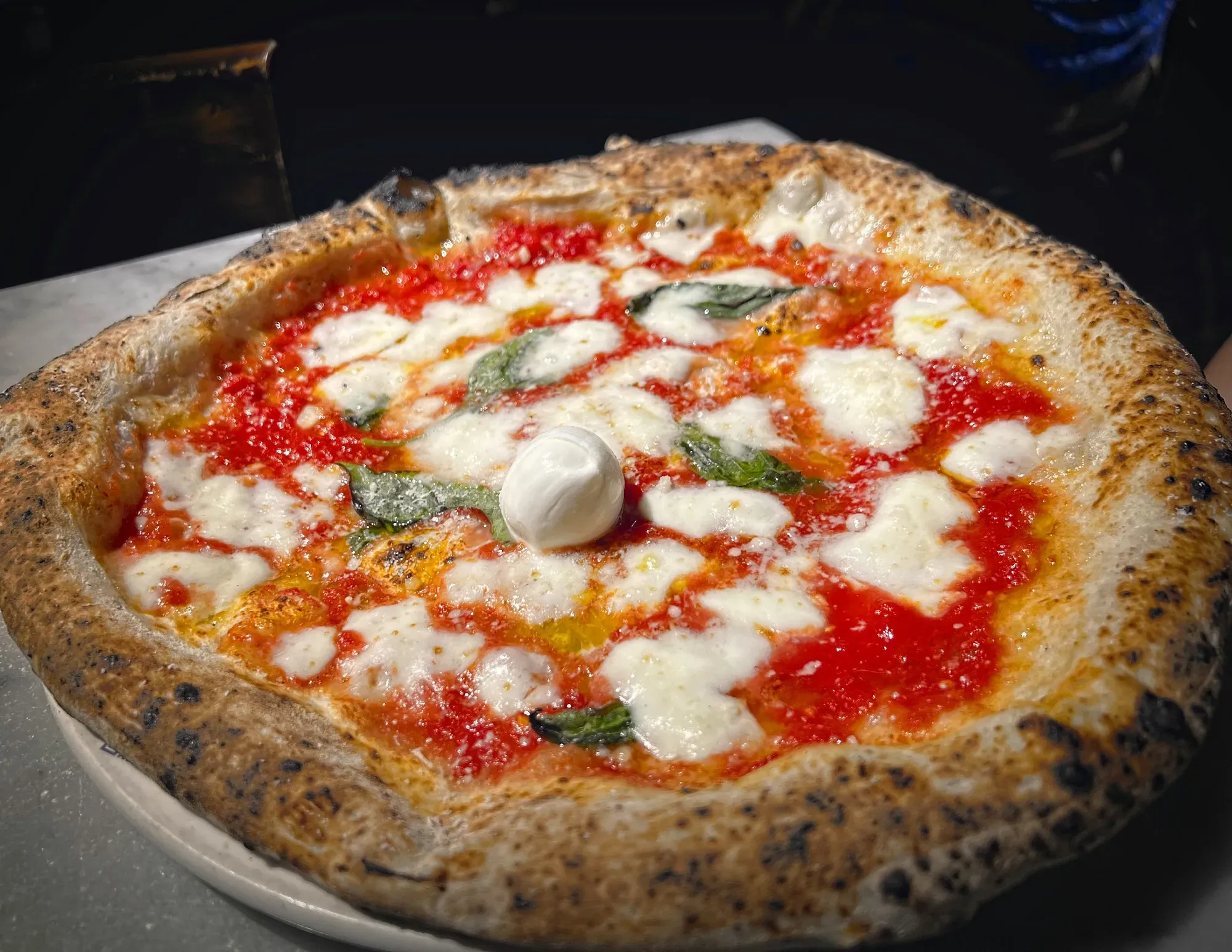
Arguably the most successful globalized dish in human history, the humble pizza originated right here in Southern Italy. The idea of pizza is derived from flatbread dishes consumed by ancient Egyptians, Greeks, and Romans. While the word pizza finds its first documented appearance in 997 AD, it was most likely what we think of today as Focaccia; the true, modern pizza was birthed in Naples in the late 18th / early 19th century.
Pizza consists of dough (flour, water, salt, yeast), a sauce, cheese, and optional toppings. In many regards, it is a fairly simple dish. However, creating the perfect pizza can be one of the most challenging as well as contested endeavors in gastronomy. I say contested because there are so many opinions of what makes a perfect pizza, giving rise to a plethora of different pizza styles to explore. Since this post is about Southern Italy, here we will give a quick review of the most traditional style: the Neapolitan pizza.
The Neapolitan pizza is all about quality and getting back to pizza's roots. A Neapolitan style pizza is cooked exclusively in a wood-fired oven (heated to somewhere between 430-480°C/806-896°F), producing a roundish pizza with a max diameter of 35cm/13.8inch and a soft, fragrant raised edge (called the "cornicione"). These are just the minimum requirements to be in the style of a Neapolitan pizza. A true Neapolitan pizza means that the ingredients used to create the pizza are from the Campania region. Namely, this means tomatoes and cheese from the region of Italy near Naples. By far the two most famous examples of this are San Marzano tomatoes and Mozzarella di Bufali. San Marzano tomatoes are a plum tomato from the town of San Marzano outside of Naples, grown in the soil surrounding Mt. Vesuvius. Mozzarella di Bufali is a mozarella cheese made from Italian water buffalo with D.O.P. ("Denominazione di Origine Protetta" - Protected Designation of Origin) status. D.O.P., like D.O.C. but for all food products instead of just wines, means that by using that name for a product, it is guaranteed to have originated from that particular place; i.e.- if it is called Mozzarella di Bufali then it was produced in the Campania, Lazio, Apulia, or Molise. If cared for properly, these two ingredients have a particular taste that is argued to stand above other tomatoes and cheeses when used on a pizza. For that reason, the Neapolitan pizza classically has been uptight about only calling it a Neapolitan pizza if these ingredients are used. Thus, the ingredients for a true Neapolitan pizza are as follows:
- Water, Salt, Yeast, Flour (yes, there are often rules about what flour to use)
- Tomato (from Campania, often San Marzano specifically)
- Mozzarella di Bufali (sometimes fior di latte is used instead)
- Fresh basil
- Extra-virgin olive oil ("poured in a spiral motion" - not a joke)
There could be an entire dissertation written on pizza. More specifically there could be an entire dissertation written on Neapolitan-style pizza, but I don't intend to do that in this article. The above information is simply a hint on the breadth and depth one can learn about pizza, as well as introduce the traditional style of pizza you will most likely come across in Southern Italy. If you are in Naples, almost all of the pizzas will be classical Neapolitan-styled (not necessarily following all the ingredient rules above but in that style). Make sure you take advantage of your time there and try plenty of these pizzas, as I would argue they are on average the best pizzas in the world!
Caprese Salad
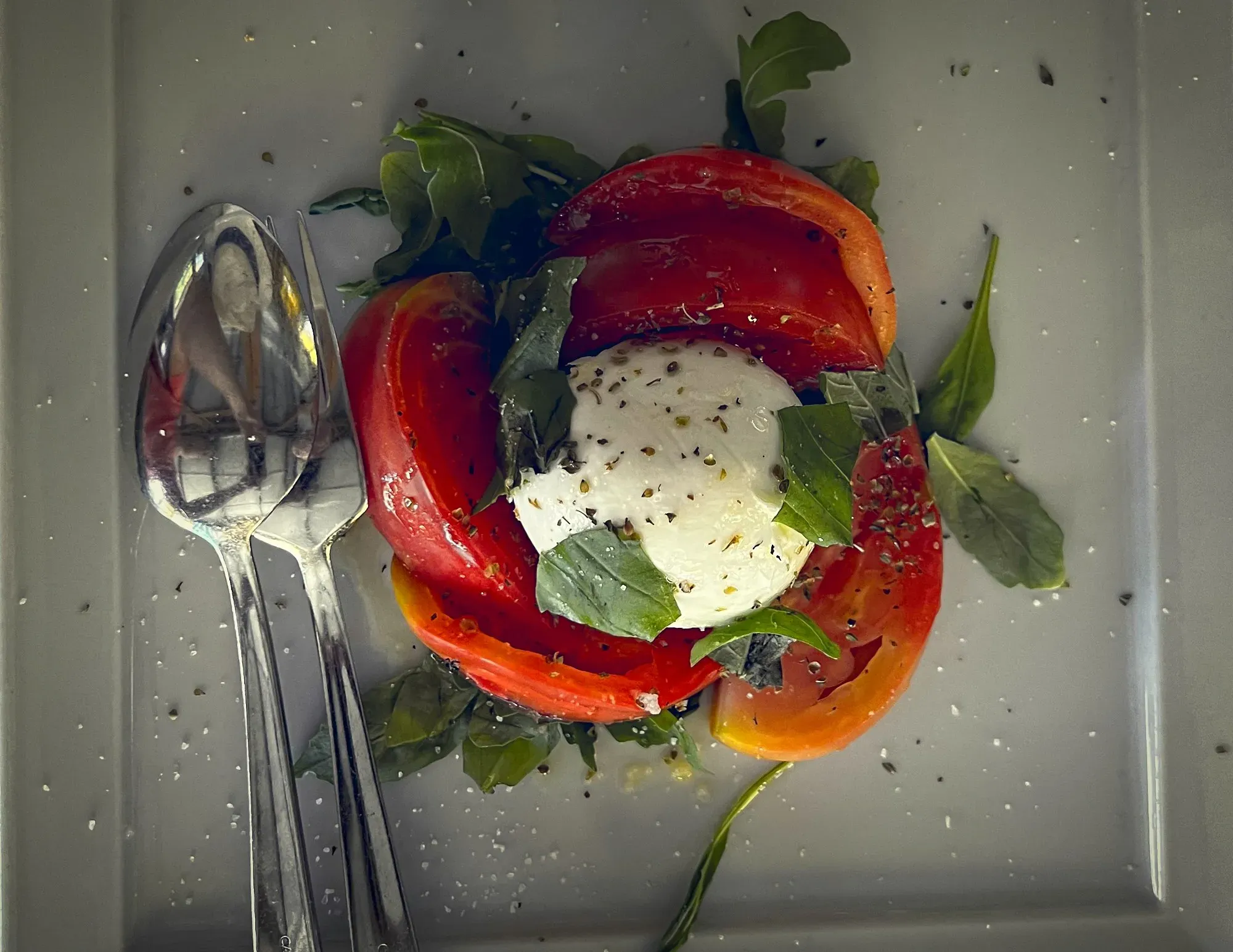
Caprese Salad is probably the most famous salad from Italy. It is named for its birthplace, Capri, a beautiful island off the coast of Naples. How did it reach such international renown? Well, it has the capacity to taste good because it's not salad! Instead of bitter leafy greens, this salad is made up of tomatoes and mozzarella cheese and is seasoned with basil, salt, and olive oil. Ensure you snag one at some point for Antipasti.
Arancini
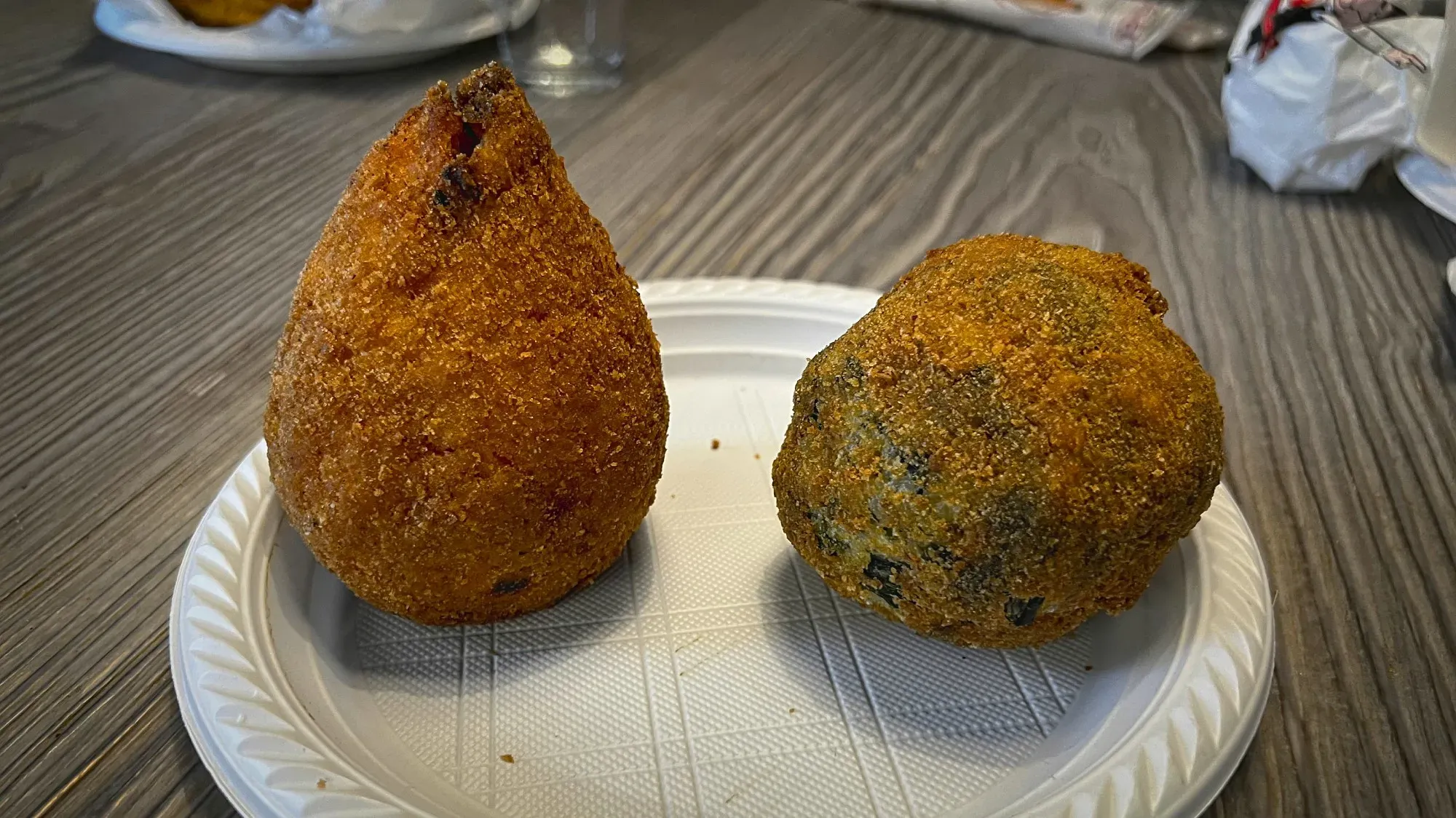
Arancini are one of the products of the unique cultural experiments that is Sicily. A stuffed rice ball covered in breadcrumbs and deep-fried, this calorie-rich snack is a fan favorite of much of Southern Italy.
Granita
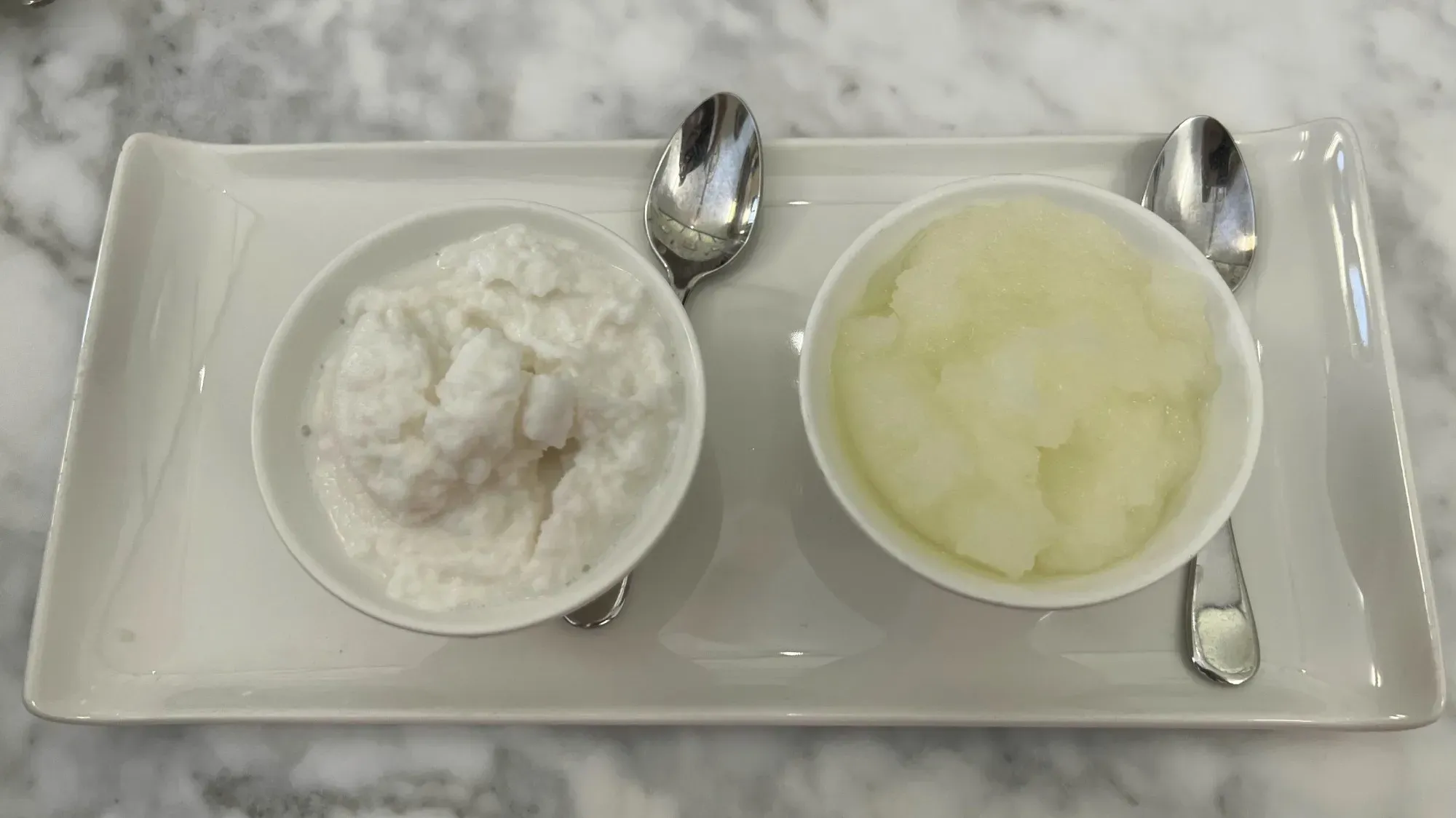
The legend goes that the Granita was invented by an Arabic soldier who was on patrol at Mount Etna. Lava caves around the volcano accumulated snow in the winter and became storage for ice throughout the summer. One day, an Arabic soldier who was exhausted by the heat grabbed some shaved ice from these caves and lemon from a nearby tree, squeezed the lemon juice on the ice, and voilà - the granita was born. While it is a lovely story, the ancestor of the Granita was probably around since Mesopotamia. Nevertheless, the modern Granita is credited to an icy treat from Sicily. Seek one of these to refresh yourself on a hot, summer day.
Canolli

"Leave the gun, take the canolli."
- The Godfather
The cannoli has reached a monumental status in the Italian dessert scene. A cannolo (cannoli is the plural in Italian) is a tube-shaped, deep-fried pastry filled with a sweet, ricotta cream. Hailing from Sicily, this is one of the most unique and delicious dolci (Italian for dessert) you can get at a caffè. Many cannoli outside of Italy will barely have the taste of ricotta and their shells become soggy from being filled too long ago. There is a much higher likelihood it will be an incredible cannoli if the filling is piped when you order. Many international cannoli I have tasted have been meh, but the cannoli in Italy- buonissimo!
Regional-Specific Shoutouts
Here we go through some of the region-specific dishes that the average non-Italian person might not know about.
Neapolitan Ragù
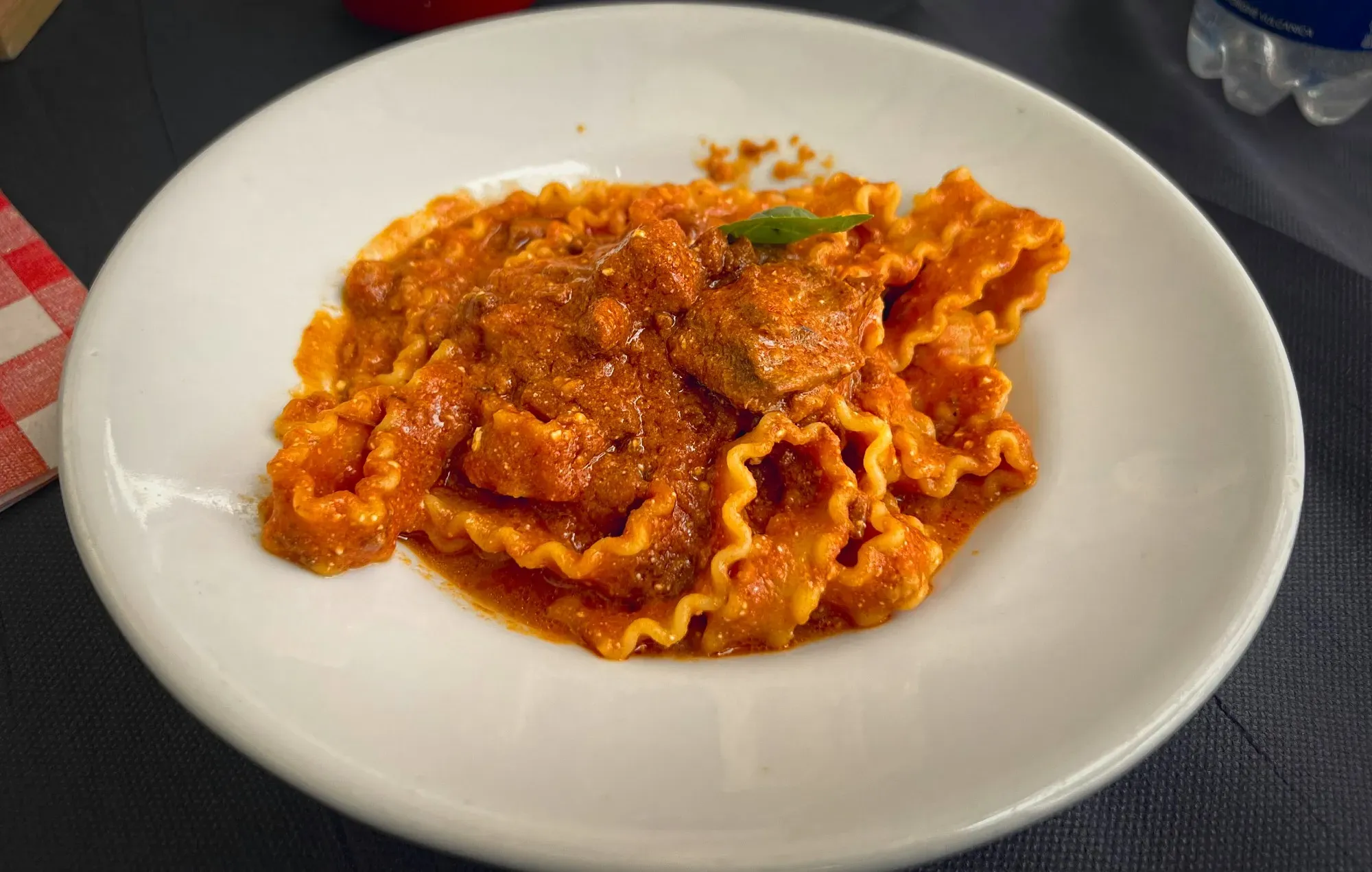
Let us take a quick journey into the world of Italian Ragù. Ragù actually finds its origins in a French word, deriving from ragout, which is defined as any stew with diced meat, fish, or vegetables. We are not exactly sure when the crossover happened, only that since the Renaissance period Italians have been making Ragù. It started as a second course (Secondi), eventually transforming into an enhancement for pasta. We don't really know when the first official Italian Ragù came about, as it was a slow development process. In this gap of definitive knowledge, two cities in Italy both now claim to be the true inventor of this beloved dish. Hence, we arrive at the great Italian Ragù debate: Bolognese Ragù vs. Neapolitan Ragù.
Neapolitan Ragù is made with a mixture of meats, classically the least expensive cuts of beef, and cooked for a long time. Some of you who know a little bit about Italian cooking might be thinking, "Hey, this sounds a lot like Sunday Sauce", and you would be correct. Neapolitan Ragù was traditionally served on Sundays; preparation started early in the morning by cooking a cheap cut of beef and any other leftover meats from the week slowly until it become a thick and creamy sauce. Many Italians therefore simply refer to Neapolitan Ragù as "Sunday Sauce", this phrasing is perpetuated by Italian Americans who predominantly think of this dish as "Sunday Sauce" or "Gravy".
On the other hand, Ragù alla Bolognese, or Bolognese Ragù / Bolognese sauce, is coarsely minced beef (and sometimes pancetta) in a broth of carrots, celery, onions, tomatoes, white wine, whole milk, and olive oil. The important question is, which one is better? To that I would respond, "Taste is subjective! Try both. They are both great!". Personally, Neapolitan Ragù is possibly my absolute favorite Italian pasta dish. As such, my answer is that Neapolitan Ragù is the winner.
This minor digression into Ragù was meant to serve two purposes. Firstly, as an insight into a theme of Italian food: regionally contested. Many of the globalized Italian dishes that we think of are actually either the domination or combination of different regions' versions of a dish. Internationally, we see Sunday Sauce and Bolognese sauce; nationally, it is a regional rivalry seeped in historical context and tradition. Secondly, and more practically, as a means to get you to go out and try both Neapolitan Ragù and Bolognese Ragù!
Fried Pizza
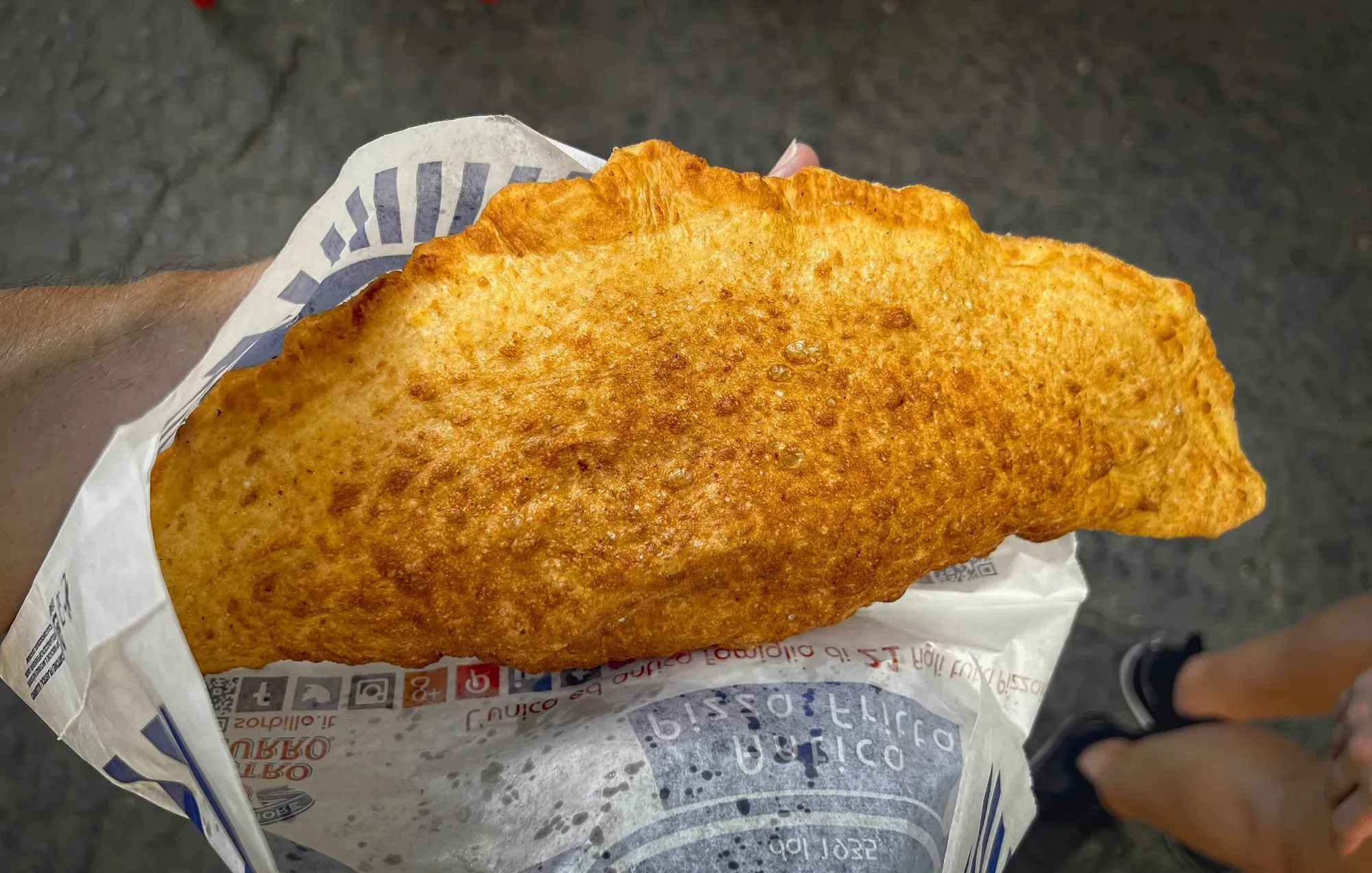
Fried pizza is a fun invention of Naples. Do not picture a circular flat pizza that has been fried. Instead, fried pizza is more akin to a calzone: a pizza folded over and then deep fried. The fry was relatively light meaning it was not as oily and heavy as I would expect.
Cuoppi
Cuoppi is a popular street food in Southern Italy, particularly in the coastal regions. It is a paper cone filled with a variety of fried seafood, served hot and crispy. The seafood used in cuoppi can vary depending on the availability and seasonality of the catch. Some common options include calamari, shrimp, fish, and small octopus.
Limoncello
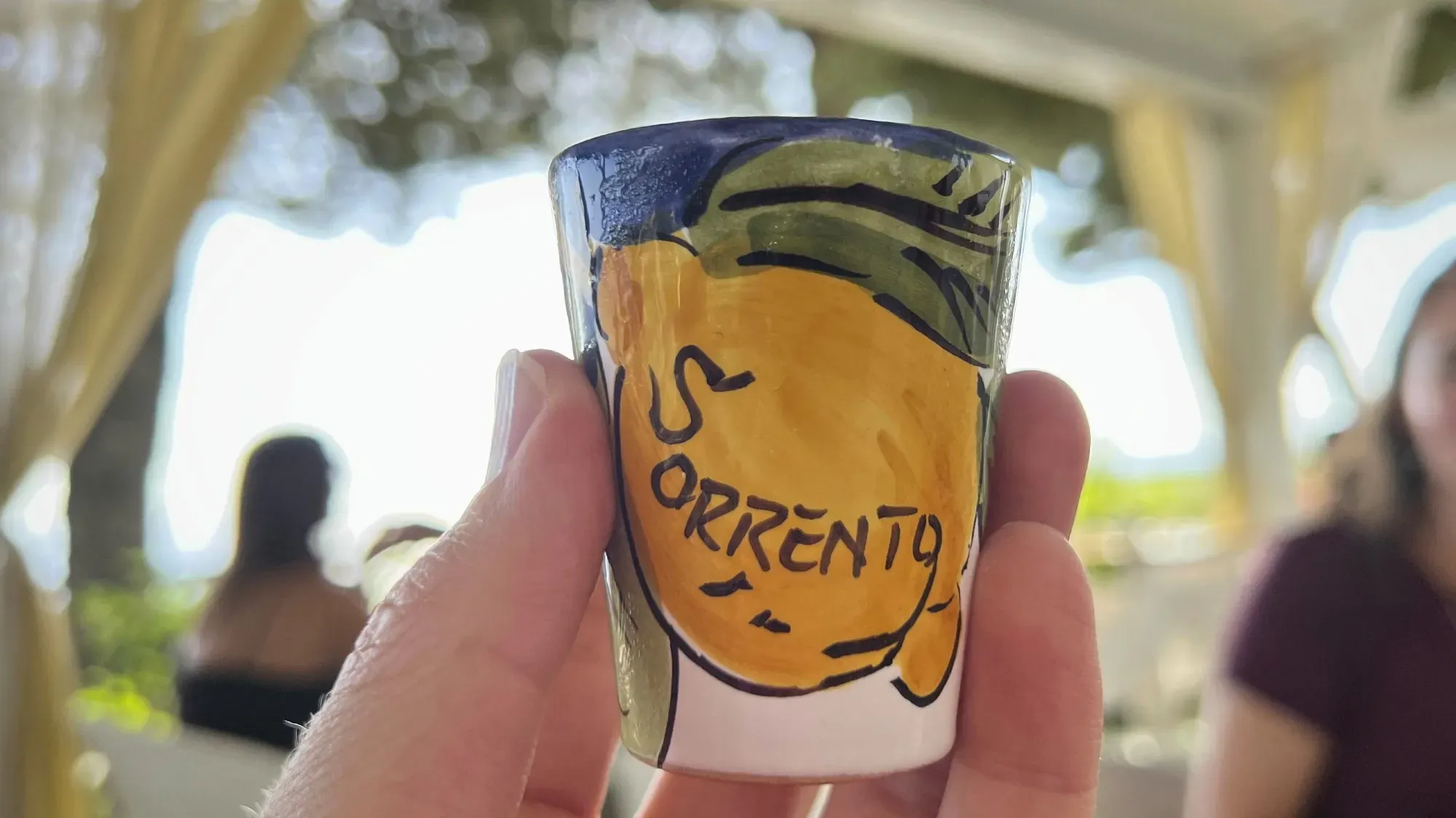
Limoncello is an Italian lemon liqueur from Southern Italy. Capri, Sorrento, and the Amalfi Coast all wish to claim Limoncello as their own invention. While it is impossible to know the exact origin, all three of these locations grow fantastic lemons and so tasting Limoncello if you are ever in this region is strongly recommended.
Spaghetti alla Vongole
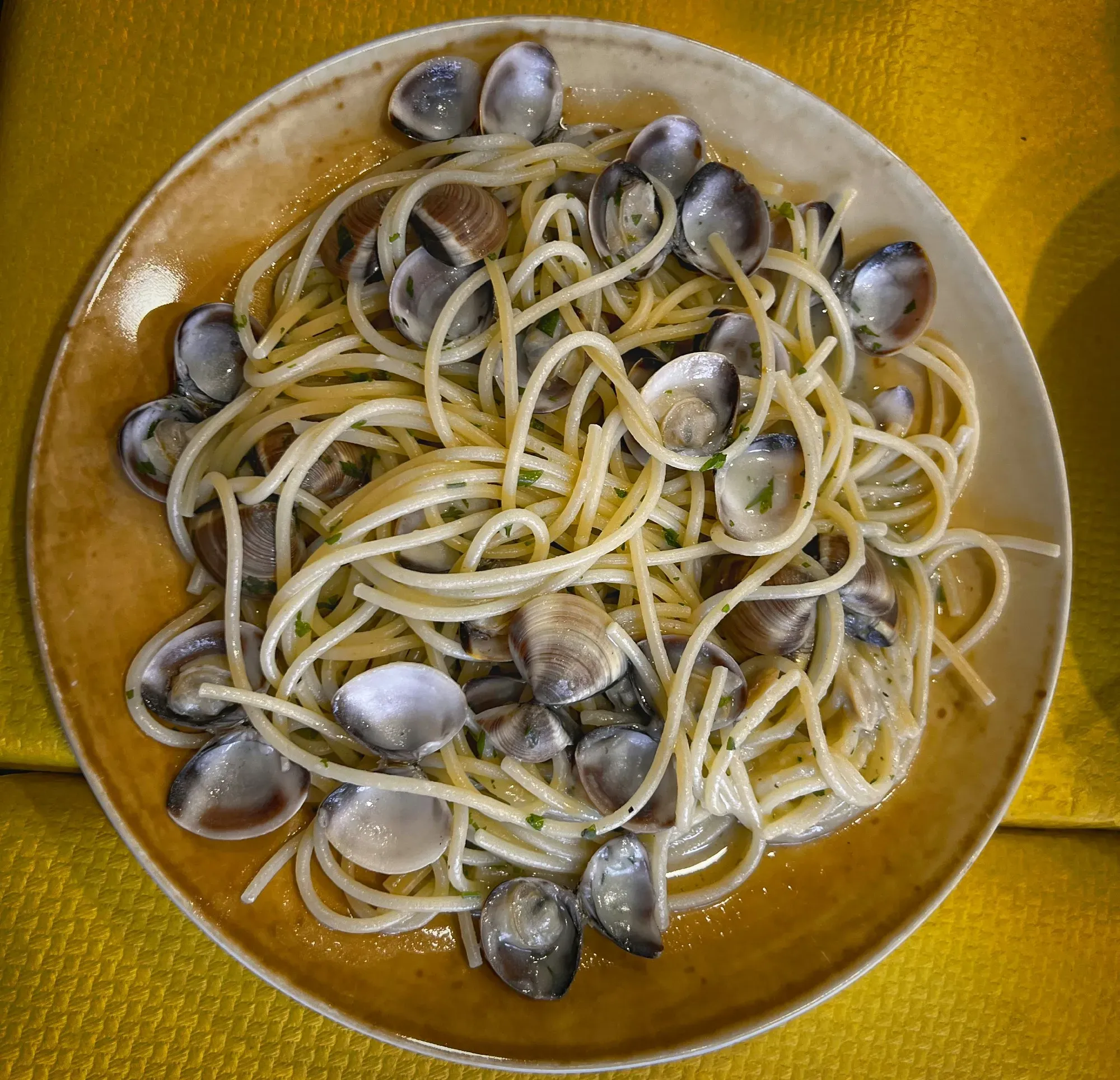
Spaghetti alla Vongole, spaghetti with clams, is a popular dish throughout Italy, but especially so in the Naples area.
Spaghettia alla Nerano
Spaghetti alla Nerano, spaghetti with fried zuccini, is a dish from the Sorento penninsula. Usually made with provolone, the dish is a decent vegetarian option from the Campania region.
Pasta alla Norma
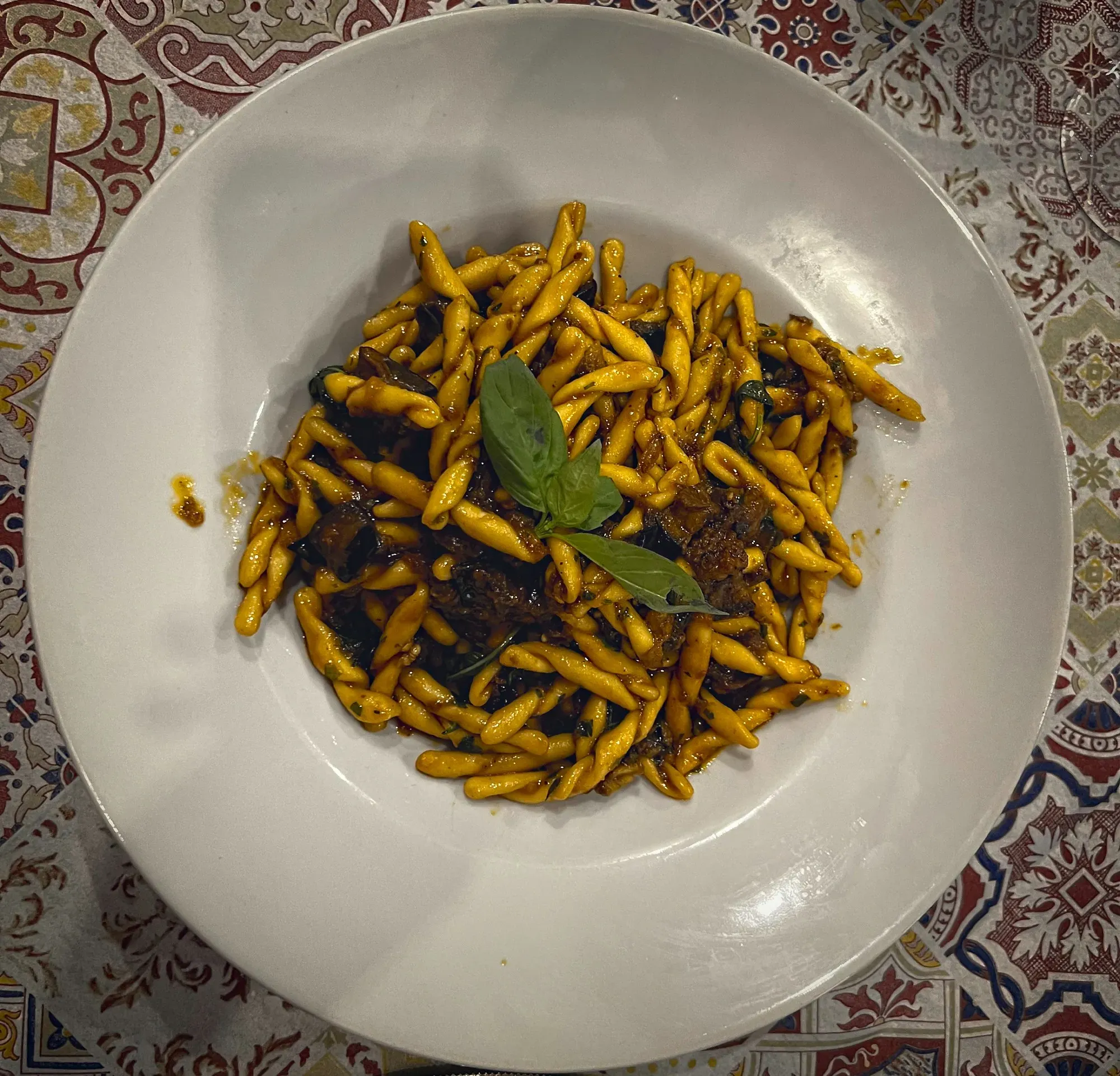
Pasta alla Norma, pasta with eggplant, is a hearty dish that is extremely popular in Sicily.
Scialatielli and Orecchiette Pasta
Practically every region in Italy can say they've invented a kind of pasta or two. Scialatielli is a pasta unique to the Amalfi Coast region and is a good pick to try when there. Orecchiette is a famous pasta that comes from Apulia, and should definitely be sampled in any of the various dishes from the region.
Focaccia Barese
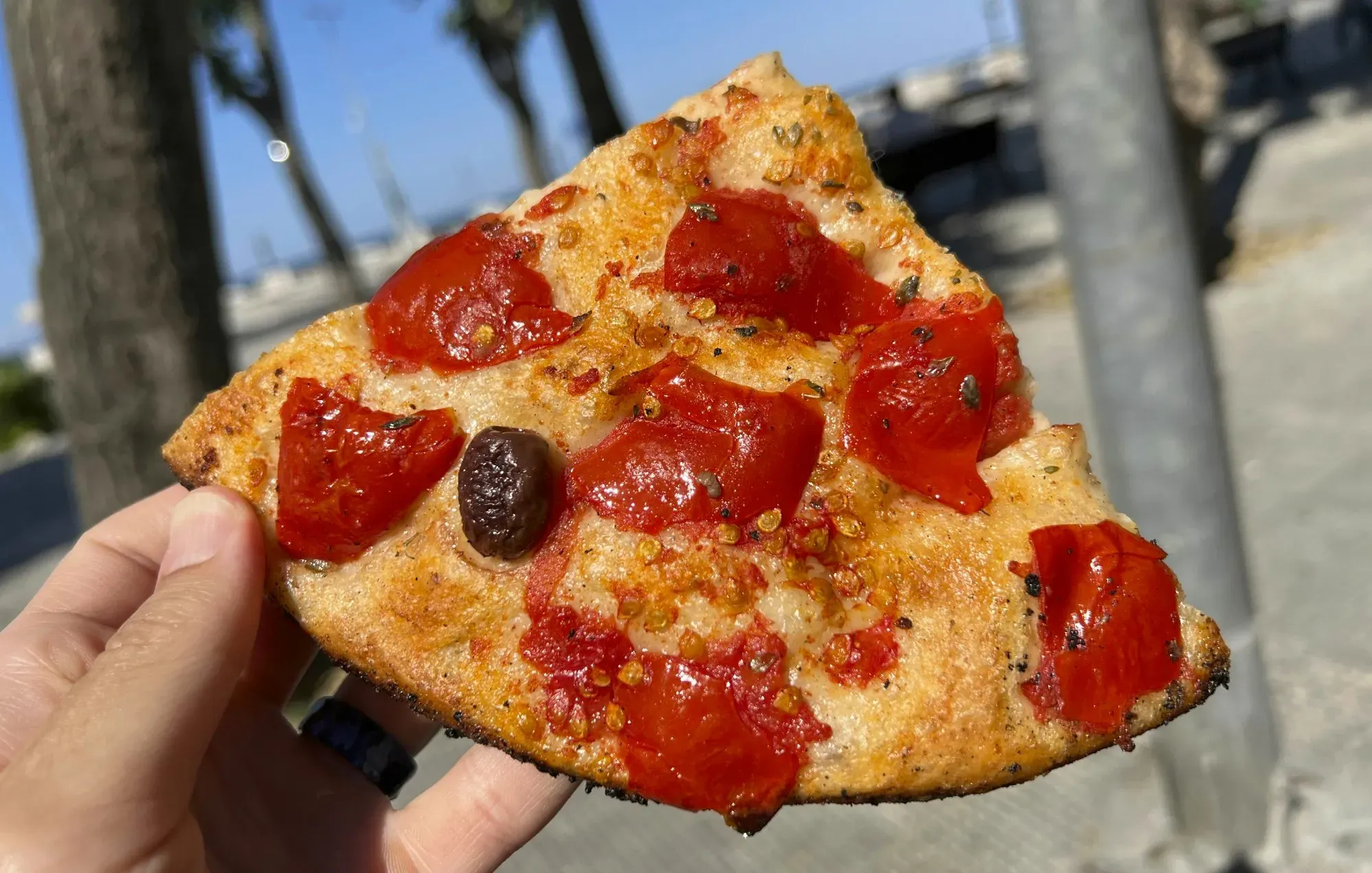
Focaccia, the ancestor of the pizza, is a flat-leavened bread popular in Italy. Bari is known for its Focaccia Barese, which is made with tomatoes, olives, and sometimes potatoes. Having a bite of focaccia while lounging by the lungomare (Italian for waterfront, or part of town facing the sea) in Bari is a great way to spend a wonderfully relaxing afternoon.
Pane di Altamura
D.O.P status has a relatively difficult bar to pass. While the list of D.O.P. foods in Italy is quite extensive, there are scarcely any breads on that list. One of the only breads in the world that does pass the threshold to hold D.O.P. status is Pane di Altamura. This bread from Altamura, a small town in Apulia outside of Bari, is made with remilled Semolina flour and an ancient sourdough starter. Be careful about finding legitimate Pane di Altamura, as many bakeries attempt to make knock-off versions. On a similar note, Pane di Matera is a unique bread in the area and is a great choice to try when visiting Matera.
Sfogliatella
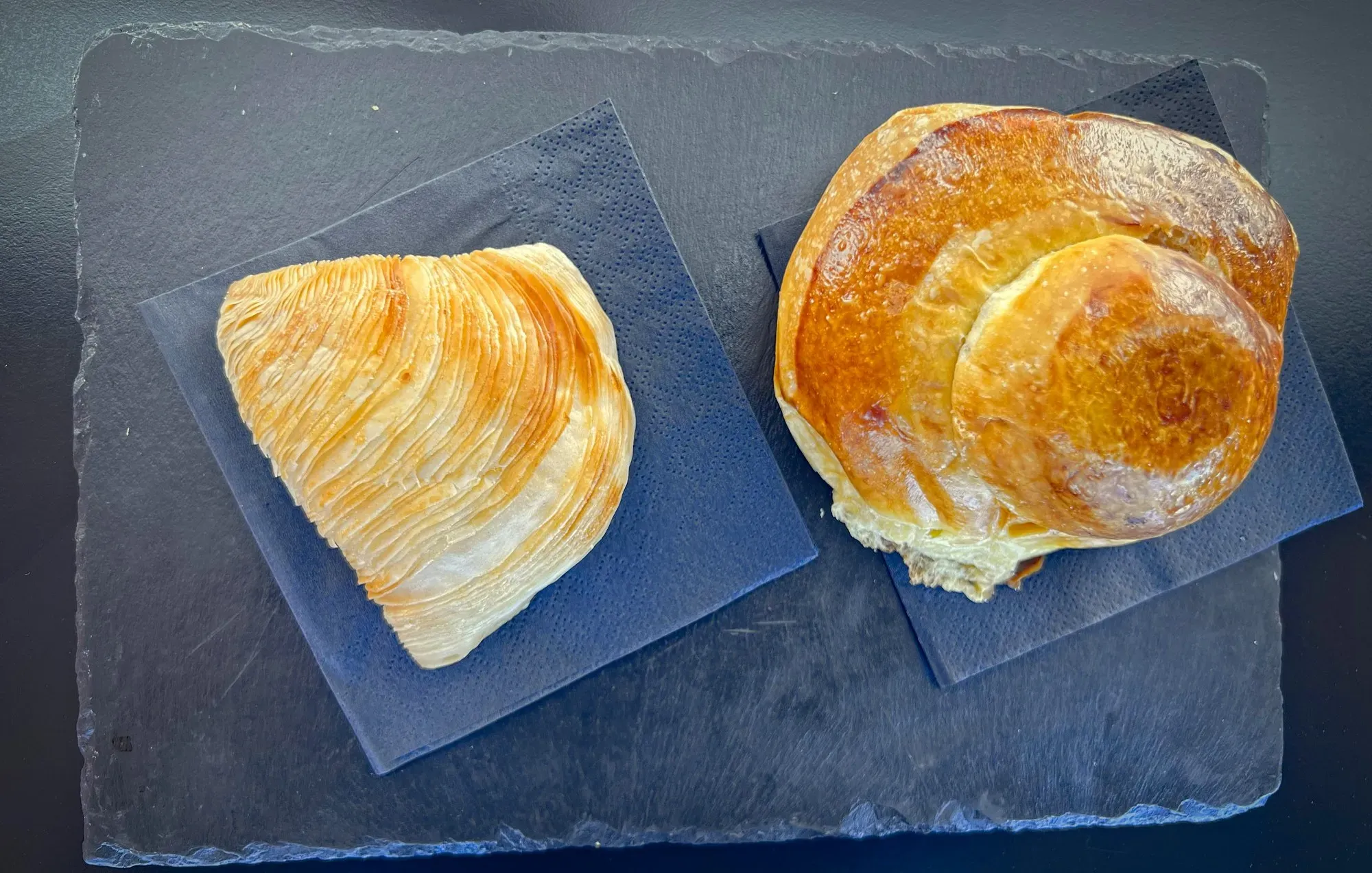
Sfogliatella is one of the more famous Italian pastries, but did you know there are two types? Sfogliatella riccia is the more popular version which has small, stacked leaves of pastry on the outside and is stuffed with dough, ricotta, and candied fruits/nuts (usually orange). In the United States, it is often called "Lobster Tail". Sfogliatella frolla is the other type of Sfogliatella that has a shortcrust dough on the outside instead of the layered ridges. This treat originated from Naples and can be found in any caffè in the city.
Babà
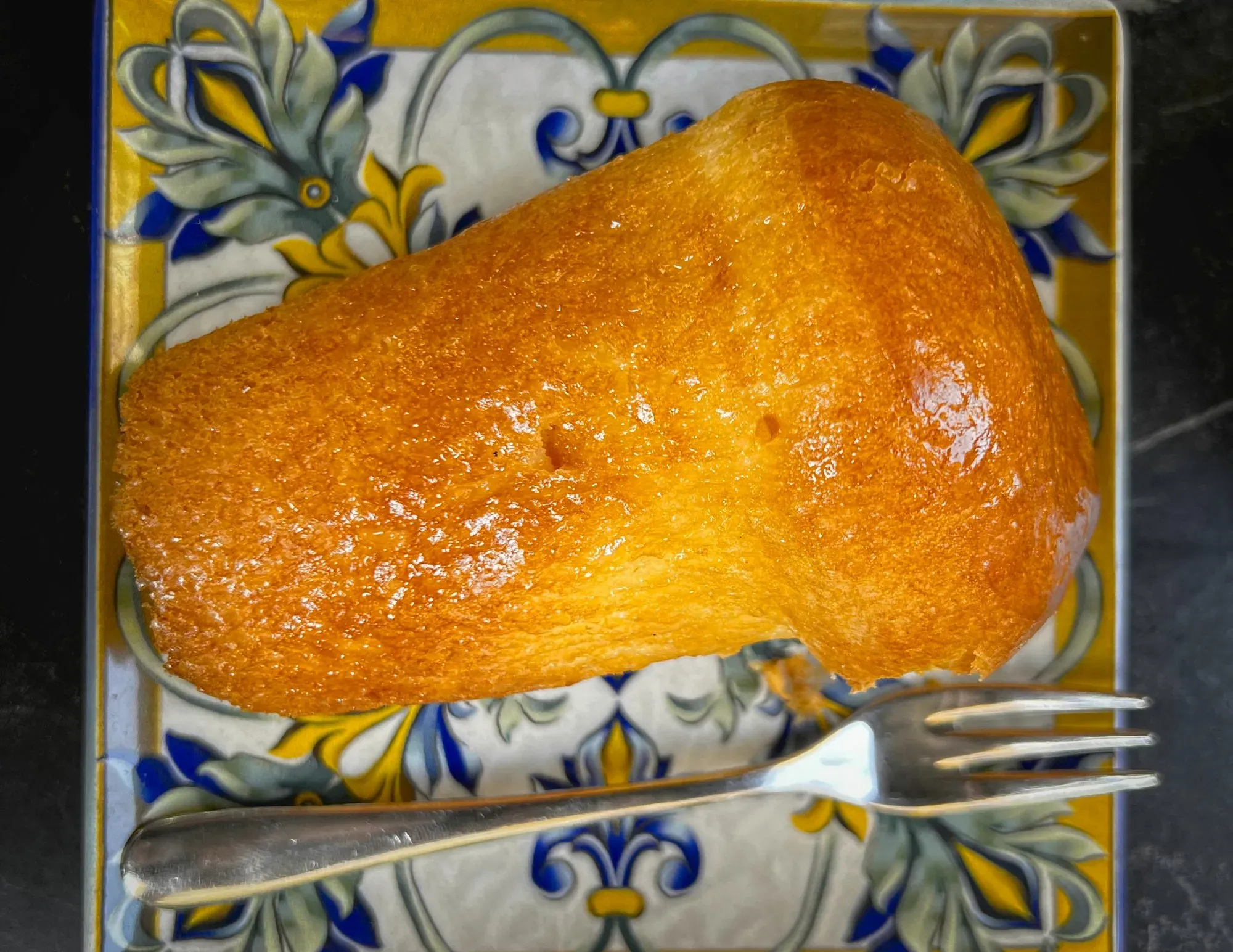
The backstory of Babà is a fun adventure all in and of itself. I will leave it as an exercise for the reader to go read all about King Stanislao Leszczyński and the journey of Babà to Naples. What you need to know now is that Babà is a distinctively-shaped sponge cake soaked in a citrus-scented rum syrup found in almost any caffè in Naples.
Taralli
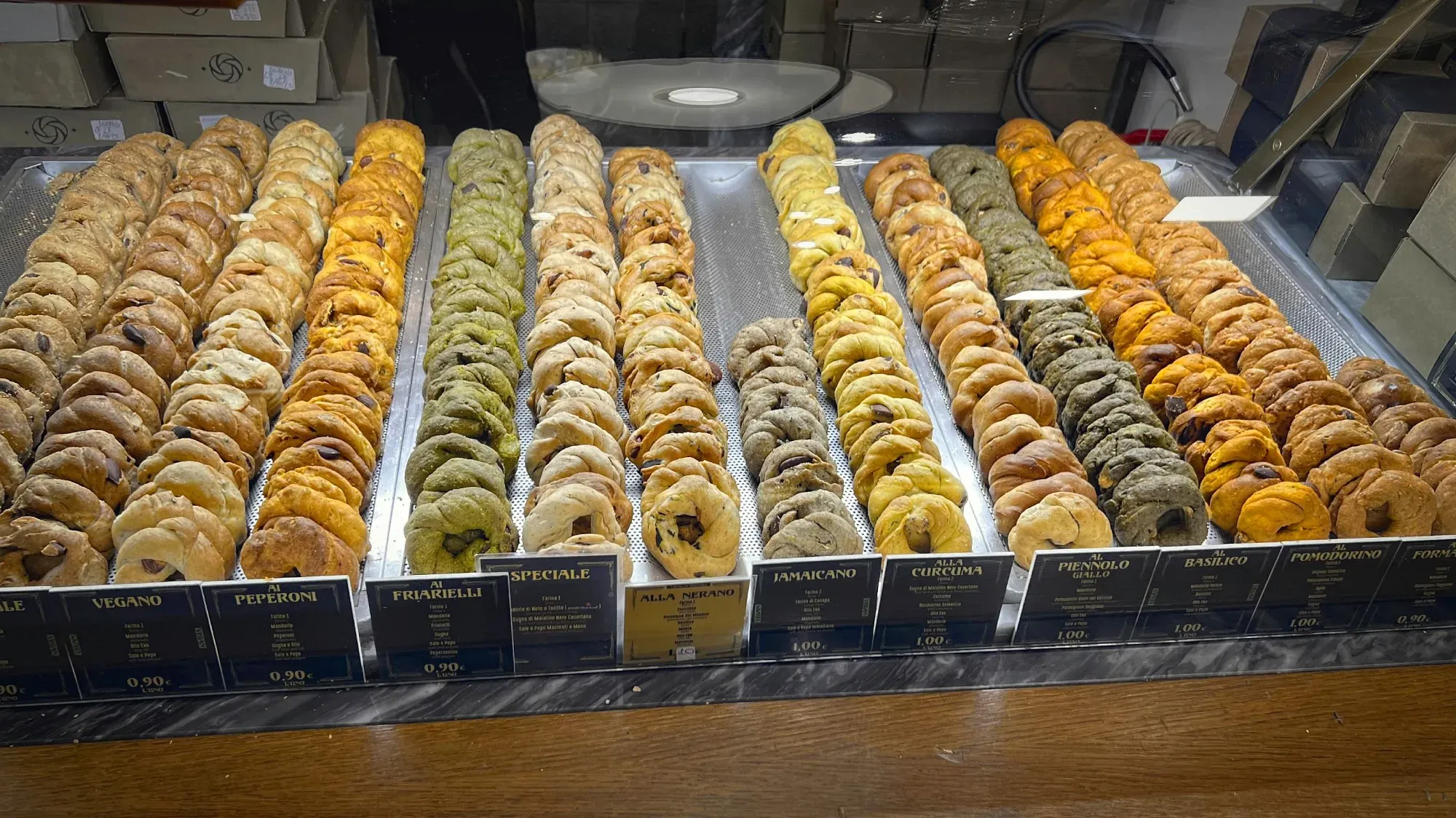
Taralli is a small, ring-shaped cracker that can be found in savory or sweet varieties. It was created by laborers from the Apulia region who came up with a creative use for the left-over scraps of dough. Grab a bag with some different flavors for a quick snack.
Brioche con Gelato
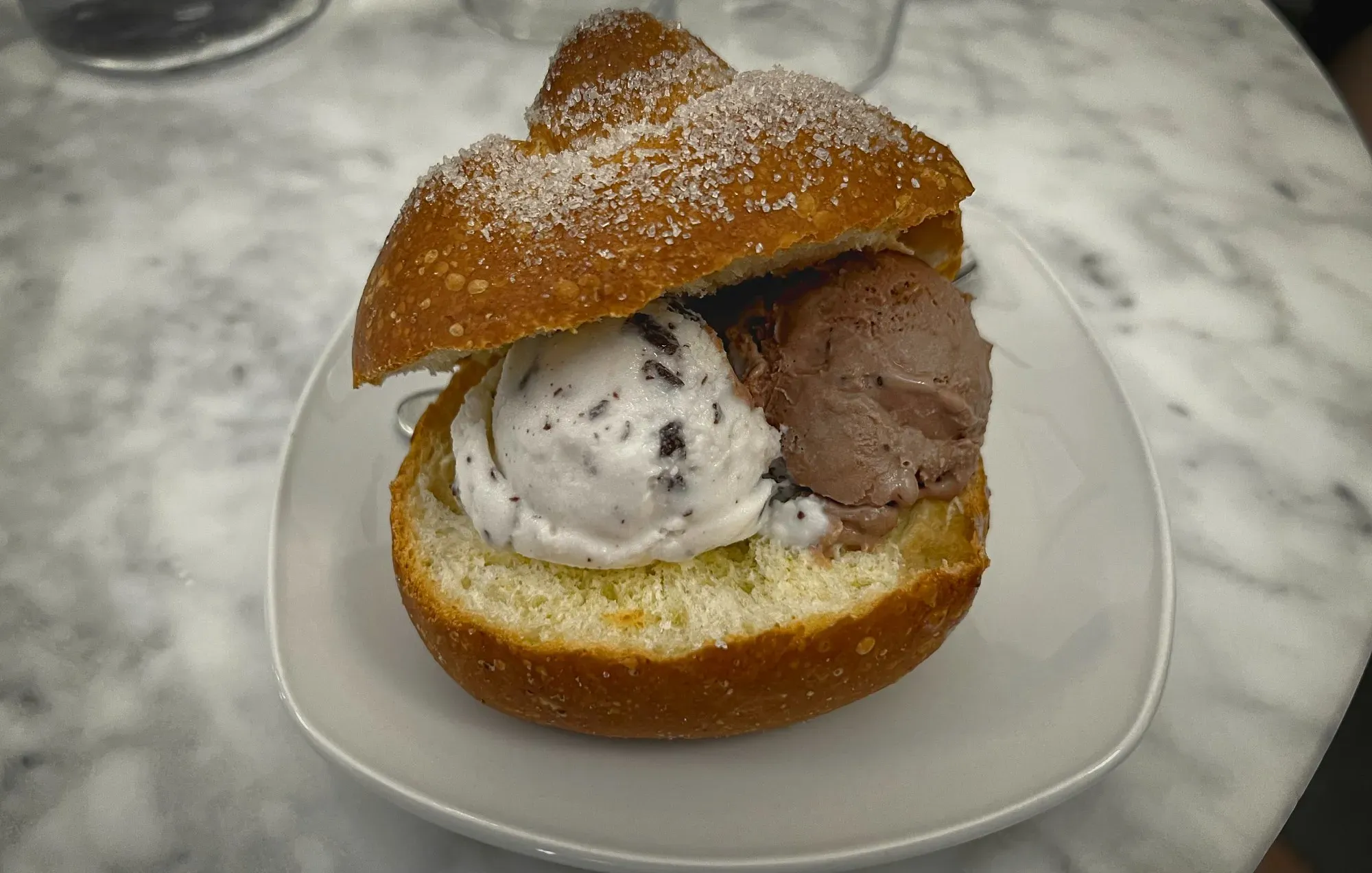
Do you like Brioche (not the same as, but similar to a croissant or cornetto)? Do you like Gelato? Ever thought of making a true ice cream sandwich by smashing some gelato between a brioche?? Well, the Italians have, and it's delicious! It is indeed as decadent as it sounds, but when in Rome, right? Well, close enough (this treat is actually attributed to Sicily). I personally prefer to enjoy each alone instead of the wombo-combo, but give it a try and decide for yourself.
List of Other Things to Try:
There are so many regional dishes and treats in a country with a culinary tradition as extensive as Italy's. While many of the foods above can be found at Italian restaurants internationally, some items are rarer to find outside of their native homeland. If you are ever blessed enough to travel to this region, wander around and sample all you can from the local cuisines. Here is a list of other possible dishes you might find:
- Su Porcheddu / Porcetto Arrosto (Roast suckling pig from Sardinia)
- Pardulas (Puff-pastry pies with ricotta and lemon from Sardinia)
- Zuppa Gallurese (Layered sheep broth and stale bread from Sardinia)
- Baba Rustica (Savory bread unique to Naples)
- Friarelli (Bitter green similar to broccoli rabe grown in Campania)
- Pasta ai Fagioli (Bean and pasta dish with contested origins)
- ‘Nduja (Spicy sausage spread from Calabria)
- Torta Caprese (Chocolate, nut cake from Capri)
- Delizia al Limone (Limon dessert cake from Amalfi)
- Pastiera Napoletana (Pastry custard cake from Naples)
For more information on where to go and places to see when traveling to any of these regions, check out our guide on visiting Southern Italy:
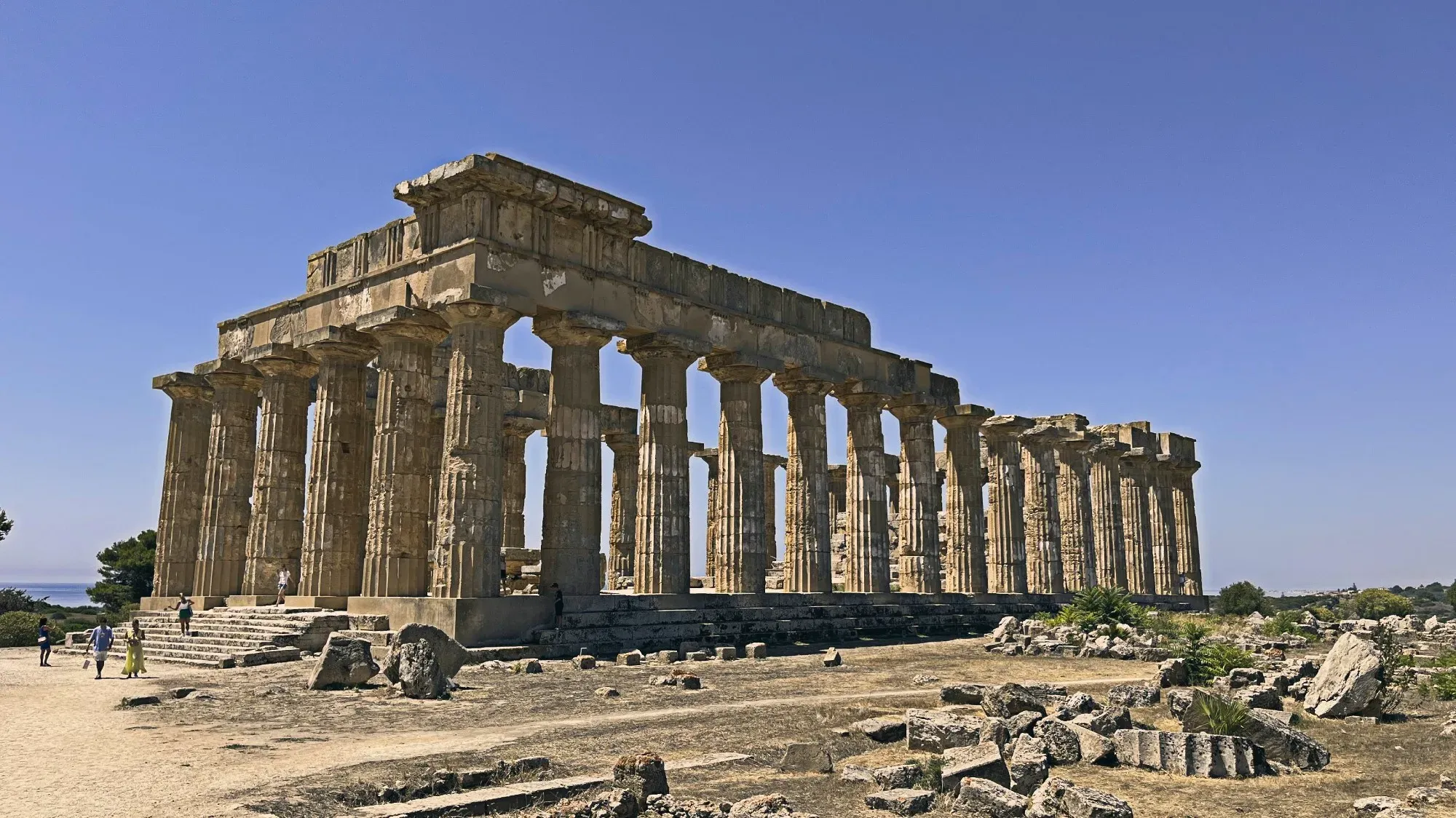
Resources
Restaurant Recommendations
While in Naples, why not hit up the oldest Pizza shop in the world? Antica Pizzeria Port’Alba is given the title of the first official pizza shop to exist, and they make a solid Neapolitan pizza.
Naples also contains a local chain called Tandem that makes a fantastic Neapolitan Ragù. Is Tandem a bit of a tourist hotspot? Absolutely. What is the difference between a "tourist trap" and a local icon? Whether its food is good. And Tandem's Neapolitan Ragù is delicious, so never fear.
If you want a tourist trap, Sorrento has O'Parrucchiano La Favorita. It is a beautiful restaurant which is covered in a canopy of lemon trees. While it is absolutely a tourist trap, the food is passable and the aesthetic is so gorgeous you should seriously consider having a meal there. A social media picture's dream!
Take a stop to one of the cafe's in Piana degli Albanesi and grab some cannoli. Piana degli Albanesi is a small town in the hills outside of Palermo, Sicily which hosts the Canolli Festival and is said to have the best cannoli in the world. Bar Pasticceria Di Noto and Antico Bar Sport were two incredible options around when I went, but any fresh cannoli made there is probably phenomenal.
To see an extensive list of restaurant recommendations in Southern Italy, check out the Food page to see a map of our top recommendations for Europe as well as the database with details on restaurants from all around the world.




